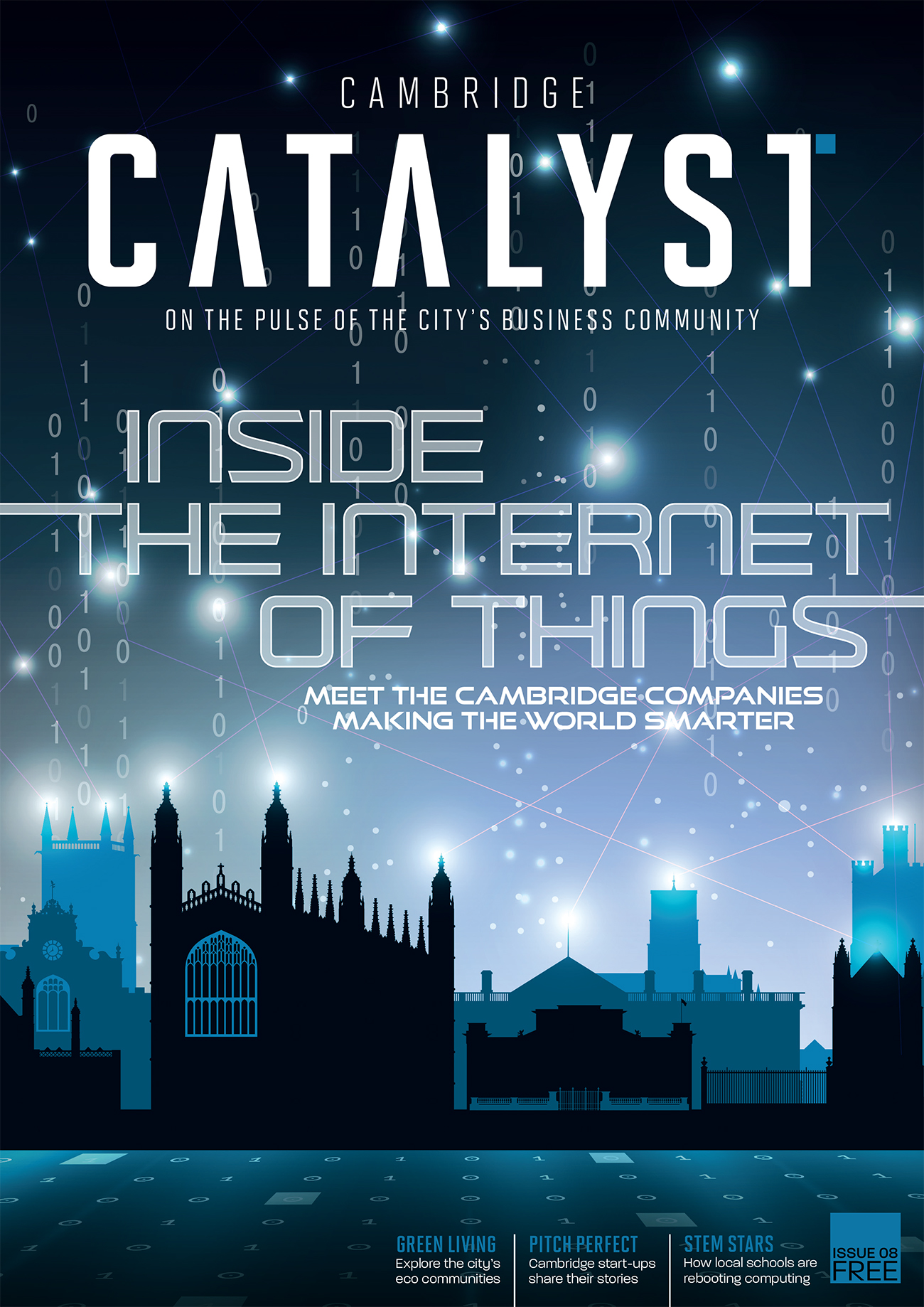
Pitch Perfect: VividQ
Posted on Apr 2, 2020 by Cambridge Catalyst
Darran Milne, CEO, gives us the lowdown on his company VividQ, whose software brings real-time computer-generated holography to everyday applications
What’s your pitch?
Imagine what it would be like for your entire living room to be a display system, so you can be completely immersed in your favourite TV show or a game. Or when driving your car, having Google maps navigation projected out on the road in front of you, making it safer and easier to use. Now imagine never having to carry a mobile device with you ever again because entire cities are turned into 3D displays so you can project highly realistic, immersive images into the air around you. This is what our reality will be when holography becomes part of everyday applications.
VividQ‘s software platform allows us to literally engineer light to create these realistic, immersive experiences. Holography is the Holy Grail of display technologies and it will be everywhere. Our vision is that all future holographic display devices will be powered by VividQ.
Since our scientific breakthrough in holographic algorithms at the end of 2016, our software has been licensed by world’s biggest technology companies in the US, Japan and China. They bring holography to augmented reality smart glasses, in-car Head-Up Displays, and home entertainment systems. VividQ is already becoming an industry standard for next generation displays with partners including Himax and NVIDIA. With them we can license our software alongside complete display solutions to OEMs building devices ready for the consumer. We need holographic display because our world isn’t flat, but our displays still are. VividQ are on a mission to change that.

How old is the company and how did it start?
VividQ started in early 2017 with a team of co-founders out of the University of Cambridge. From the start we had a good mix of holographic and optical engineers, computer scientists, physicists and commercial people. After our initial breakthrough in holographic display algorithms, we quickly obtained funding from UK and US angels which allowed us to build out an MVP. Just last year we secured our first institutional funding from VCs based in the UK, Germany and Japan which is allowing us to accelerate our development and commercial engagements and bring holographic display to the market even faster.
What’s your role and background?
I am a co-founder and CEO of VividQ. My background was originally in theoretical physics. I completed a PhD in Quantum Information Theory at the University of St Andrews in 2012 but I left academia shortly after and worked for a couple of software companies. There I learned the essentials of software development and product management. From this, I took the jump into starting VividQ. In my history as CEO I’ve done everything from writing code, hiring, financial modeling, van driver, coffee boy. If it needs doing we just do it. Of course, I’m supported in all this by our COO, Aleksandra Pedraszewska, our CTO Andrzej Kaczorowski and CDO (Chief Development Officer) Tom Durrant. Now that the company has grown to over 30 people with several high profile international customers I find myself doing a lot of people and project management now.
 Obviously the technology is really cool. It's the kind of once-in-a-generation idea that I believe has the potential to make us one of the next big tech giants.
Obviously the technology is really cool. It's the kind of once-in-a-generation idea that I believe has the potential to make us one of the next big tech giants.
What makes the company unique?
Obviously the technology is really cool. It’s the kind of once-in-a-generation idea that I believe has the potential to make us one of the next big tech giants. I don’t think it’s an overstatement to say that we are on the verge of a revolution in display technology, the move from 2D to real 3D will be as dramatic as the introduction of the first television and VividQ are providing a vital piece of the puzzle. In addition, we have a very special company culture that prizes a scientific style rigour in all our decision making. We value the notion that no idea is above critique, regardless of who it came from. This has allowed us to create a very open, honest and productive environment that our technical staff love as it means they can always air ideas (or object to mine), knowing they will be listened to and their ideas seriously and thoroughly considered.
Biggest achievement so far?
Back in 2018 when we had a very first cut of our software and early hardware prototype systems, we were still able to deploy working systems with two large customers. This was an amazing piece of work by our teams, requiring exquisite coordination between our technical and commercial teams. Of course, there was a high degree of uncertainty and technical risk but we came through it extremely well, impressed the customers and laid the groundwork for our current commercial engagements.
Biggest challenges?
Actually one of the biggest issues we’ve encountered is more of a marketing problem rather than technical. The word “holography” is somewhat abused, especially in the augmented reality and entertainment space. It has become synonymous with pretty much any technology that overlays and image on the real world. We are compared to such illusions like the Tupac “hologram”, despite this just being a 2D reflection onto a piece of glass or the images created in devices such as Microsoft Hololens, which are just 2D images in a waveguide. The real holographic display that VividQ enables is totally new, has not hit the market yet and will give an experience to users that go far beyond these current technologies. However, it can be tricky to explain the value of our technology when in some people’s minds something like it already exists.
Which individuals or companies are your biggest inspirations?
In terms of companies, I think ARM is an excellent proxy for VividQ. A Cambridge-based deep tech company with a technology that can be used across hundreds of different types of devices. In some ways, we have modelled our future growth in line with the huge success that ARM has achieved. As for people, I would have to say that I am most inspired by the team around me. We have genuinely brought together some of the most intelligent, dedicated and interesting people I have ever known.
Where do you want the business to be in five years?
Within five years, we will have released millions of holographic display devices to consumers with our OEM partners, VividQ‘s name will stand as the standard of excellence for display technology. We will be funding research into next generation projects, allowing us to expand our applications and be well on the road to becoming a tech giant.
Find out more about VividQ at vivid-q.com


